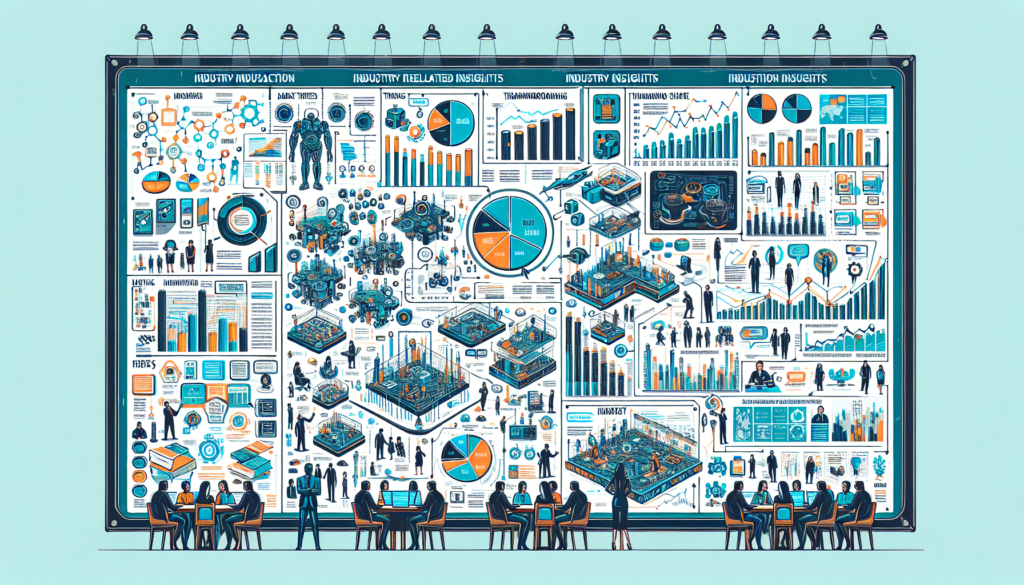What is the Customer Journey?
The customer journey refers to the entire process a consumer goes through when interacting with a brand or product, starting from the initial awareness to the final purchase and beyond. Understanding this journey is crucial for brands, as it allows them to create tailored marketing strategies that effectively guide potential customers through each stage. The journey typically consists of several stages, including awareness, consideration, decision, and post-purchase evaluation. By mapping out these stages, businesses can better align their marketing efforts to meet the needs and expectations of their customers.
The Stages of the Customer Journey
The customer journey can be broken down into distinct stages, each representing a critical point in a consumer’s decision-making process.
1. **Awareness**: In this initial stage, potential customers become aware of a problem or need they have. They begin to seek information and explore options. This is where digital marketing efforts, such as SEO, social media marketing, and content marketing, come into play. Brands aim to capture the attention of consumers through engaging content that addresses their pain points.
2. **Consideration**: Once consumers identify their needs, they move into the consideration stage. Here, they evaluate different products or services that could solve their problems. Brands can leverage email marketing, webinars, and detailed product comparisons to provide valuable insights and build trust with potential customers. This is also the stage where reviews and testimonials can significantly impact a consumer’s perception of a brand.
3. **Decision**: In this stage, consumers are ready to make a purchase decision. They weigh their options based on price, quality, and brand reputation. Digital marketing strategies such as targeted ads, promotional offers, and retargeting campaigns can effectively influence this decision-making process. Ensuring that the purchase process is seamless and straightforward is crucial at this point.
4. **Post-Purchase**: After a purchase, the customer journey doesn’t end. The post-purchase stage is vital for building customer loyalty and encouraging repeat business. Brands should focus on follow-up communications, satisfaction surveys, and loyalty programs. Engaging customers post-purchase helps in nurturing relationships and encourages them to become brand advocates.
Mapping the Customer Journey
Mapping the customer journey involves creating a visual representation of the steps consumers take from awareness to post-purchase. This process allows businesses to identify potential touchpoints and areas where they can enhance the customer experience.
A well-constructed customer journey map includes:
– **Customer Personas**: Understanding who your customers are, their demographics, preferences, and pain points is essential. This information helps tailor marketing strategies to resonate with specific segments of your audience.
– **Touchpoints**: These are the various interactions customers have with your brand across different channels, such as social media, email, websites, and physical stores. Identifying these touchpoints helps in understanding where to focus marketing efforts.
– **Customer Emotions**: Recognizing how customers feel at each stage of their journey can provide insights into their motivations and behaviors. This emotional mapping can help brands create more empathetic marketing strategies.
– **Barriers and Opportunities**: Identifying obstacles that customers face during their journey allows businesses to address these pain points effectively. Conversely, recognizing opportunities for engagement can lead to enhanced customer experiences.
The Role of Content Marketing in the Customer Journey
Content marketing plays a vital role in guiding consumers through their journey. By providing valuable, relevant content at each stage, brands can establish themselves as thought leaders and trusted resources.
In the awareness stage, informative blog posts, infographics, and social media content can educate potential customers about their problems and potential solutions. This content should be optimized for search engines to attract organic traffic.
During the consideration phase, brands can create in-depth guides, product comparisons, and case studies that provide deeper insights into their offerings. Engaging content, such as videos and webinars, can also help in building a connection with the audience.
In the decision stage, detailed product descriptions, customer testimonials, and user-generated content can help sway customers in favor of a purchase. Highlighting unique selling propositions (USPs) and addressing common objections can also prove beneficial.
Finally, in the post-purchase stage, brands can continue to engage customers through follow-up emails, how-to guides, and satisfaction surveys. This ongoing communication fosters loyalty and encourages customers to share their experiences with others.
Utilizing Data Analytics to Understand the Customer Journey
Data analytics is a powerful tool that can provide insights into customer behavior throughout their journey. By collecting and analyzing data, businesses can make informed decisions about their marketing strategies.
1. **Tracking Customer Behavior**: Tools like Google Analytics can help track user behavior on websites, providing information on how customers navigate through different pages. Understanding bounce rates, time spent on pages, and conversion rates can reveal areas for improvement.
2. **Customer Feedback**: Collecting feedback through surveys and reviews helps businesses understand customer satisfaction levels. Analyzing this feedback can identify trends and common issues that need addressing.
3. **Segmentation**: Analyzing data allows businesses to segment their audience based on behaviors, preferences, and demographics. This segmentation enables more personalized marketing efforts, enhancing the customer experience.
4. **Predictive Analytics**: By leveraging historical data, brands can predict future customer behavior. This foresight allows for proactive marketing strategies that cater to the anticipated needs of customers.
Building a Seamless Omnichannel Experience
In today’s digital landscape, consumers interact with brands through multiple channels, making it essential for businesses to provide a seamless omnichannel experience.
An omnichannel approach ensures that customers receive consistent messaging and service across all touchpoints, whether it’s through social media, websites, email, or physical stores.
To achieve this, brands should:
– **Integrate Platforms**: Ensure that all marketing channels are connected and work together to provide a unified experience. For example, social media campaigns can drive traffic to a website, where customers can make purchases.
– **Personalize Interactions**: Use customer data to tailor interactions based on individual preferences. Personalized recommendations and targeted messaging can significantly enhance customer engagement.
– **Ensure Accessibility**: Make sure that customers can easily transition from one channel to another without losing their progress. For instance, allowing customers to add items to their cart on a mobile app and then complete the purchase on a desktop site is crucial.
– **Provide Support Across Channels**: Customers should have access to support through their preferred channels, whether it’s via chat, email, or phone. Offering quick and efficient support can improve overall customer satisfaction.
The Importance of Customer Feedback
Customer feedback is invaluable in understanding the customer journey. It provides direct insights into customer perceptions and experiences, allowing businesses to refine their marketing strategies.
1. **Surveys and Questionnaires**: Sending out surveys after interactions can help gauge customer satisfaction. Questions can cover various aspects of the journey, such as ease of navigation on the website or the effectiveness of customer service.
2. **Online Reviews**: Monitoring online reviews on platforms like Google, Yelp, and social media provides a wealth of information. Positive reviews can highlight what customers value, while negative reviews can pinpoint areas needing improvement.
3. **Social Listening**: Engaging in social listening involves monitoring mentions of your brand across social media platforms. This practice can reveal customer sentiment and provide insights into how your brand is perceived in real-time.
4. **Incentivizing Feedback**: Encouraging customers to leave feedback by offering incentives, such as discounts or loyalty points, can increase response rates.
By actively seeking and valuing customer feedback, brands can make informed decisions that enhance the customer journey, leading to improved satisfaction and loyalty.
Leveraging Technology for Enhanced Customer Journeys
Technology plays a crucial role in optimizing the customer journey. From automation tools to AI-driven insights, businesses can leverage various technologies to streamline processes and enhance customer experiences.
1. **Customer Relationship Management (CRM) Systems**: CRMs help businesses manage customer interactions, track behavior, and analyze data. This information is essential for understanding customer preferences and tailoring marketing efforts accordingly.
2. **Marketing Automation**: Automation tools can streamline marketing campaigns, allowing businesses to send personalized messages to customers at the right time. For instance, automated email campaigns can be triggered based on customer behavior, such as cart abandonment.
3. **Chatbots**: Implementing chatbots on websites can provide immediate assistance to customers, answering common questions and guiding them through the purchase process. This instant support can significantly enhance the customer experience.
4. **AI and Machine Learning**: Utilizing AI can help analyze vast amounts of data to identify trends and predict customer behavior. Machine learning algorithms can also personalize content and recommendations based on individual user preferences.
By embracing technology, businesses can create a more efficient and engaging customer journey, ultimately leading to higher conversion rates and customer satisfaction.
Conclusion
Understanding the customer journey in digital marketing is essential for businesses looking to create meaningful connections with their audience. By mapping out each stage, leveraging data analytics, and employing effective marketing strategies, brands can guide customers from awareness to post-purchase, fostering loyalty and encouraging advocacy. In today’s competitive landscape, a deep understanding of the customer journey is not just beneficial; it’s a necessity for success.














